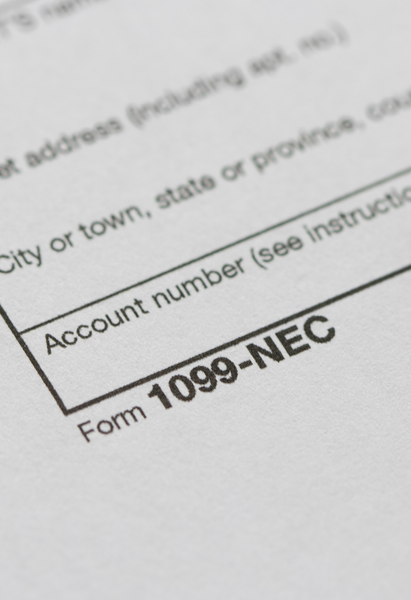Millions of people have diversified the way they earn income and joined the gig economy. This could be a side gig to help them meet financial goals, running their own small business, a second job, or even multiple side gigs. Like any income, you must report income from your multiple sources or side gigs and file specific forms when you file your taxes.
Don’t worry about reporting self-employment income from multiple sources and knowing which tax forms to report your self-employment income. TurboTax Premium will easily guide you through reporting your self-employment income and deductible expenses. You can also jump-start your taxes by snapping a photo of your form 1099-NEC or Form 1099-K that reports your self-employment income or importing your information from hundreds of financial institutions.
Although TurboTax Premium helps you easily report your self-employment income from multiple sources and your deductible business expenses, here is a breakdown of some things you should know about reporting self-employment income from multiple sources.
Reporting Your Income
If you received payments exceeding $600 from any one of your side jobs during the tax year a company or individual paid you, they should supply you with a Form 1099-NEC for the nonemployee compensation. The company or individual should also supply a copy of this form to the IRS to report your income.
If you accepted credit cards, debit cards, or prepaid cards and had over $20,000 in sales and more than 200 individual transactions through a third-party processor like PayPal or a rideshare platform you may receive a Form 1099-K.
Under the American Rescue Plan, changes were made to Form 1099-K reporting requirements for third-party payment networks like Venmo and PayPal that process credit/debit card payments or electronic payment transfers requiring these processors to report transactions on a Form 1099-K to the IRS or the payee for a lower, over $600 threshold amount. On December 23, 2022, the IRS announced a delay in the lower reporting thresholds for third-party settlement organizations (TPSOs) for tax year 2022. On November 21, 2023 the IRS announced another delay in reporting thresholds for third-party settlement organizations (TPSOs).
As a result of this delay, TPSOs will not be required to report tax year 2023 (the taxes you file in tax year 2024) transactions on a Form 1099-K to the IRS or the payee for the lower, over $600 threshold; instead, the existing 1099-K reporting threshold of the aggregate of more than $20,000 in payments and from over 200 transactions will remain in effect. The IRS is currently planning for a threshold of $5,000 for tax year 2024 (the taxes you file in 2025) as part of the phase in to implement the lower over $600 threshold enacted under the American Rescue Plan.
This change could impact people working in the gig economy, online sellers, independent contractors, and other self-employed business owners.
However, regardless of the amount (even if it’s less than $600) or if the payer did not send out the form, in general you still have to report your earnings on your taxes. The IRS requires you to report self-employment income if your net income (business income minus business expenses) from your business is $400 or more since you are also required to pay self-employment taxes on your net income.
You may be wondering, “What if I was paid in cash or via a mobile payment service like Venmo?” If you were paid in cash or via a mobile payment service for your services you are still required to report your cash earnings as business income.
Where are my earnings from my side gig reported?
In most cases, if you have nonemployee compensation, your self-employment income and business expenses will be reported on a Form Schedule C, which reports the profit or loss from your business and accompanies your Form 1040 when you file your taxes. When you complete your taxes with TurboTax Self-Employed, you will be asked simple questions about you and your business, and TurboTax Self-Employed will help you easily and accurately report your business income and deductible business expenses.
How do you report income from different side gigs?
If you have one or more side jobs, filing your taxes isn’t much different unless your jobs and sources of income are very different from each other. If they are very different, then you may need to attach multiple Schedule Cs to your tax return.
For jobs that are in the same or similar line of business can typically be reported on one Schedule C. But don’t be too concerned about selecting the right number of Schedule Cs, TurboTax has you covered and will help you to properly report your income.
For example, if you sell cake toppers on Etsy and also drive for a ridesharing company, you will have to report the income and expenses for those businesses on two separate Schedule Cs. However, if you sell cake toppers on Etsy and also have a business of making and selling cakes you could combine those businesses on one schedule C as these businesses overlap and can be in the same field of cakes and cake decorating.
What expenses offset self-employment income?
Sometimes your side hustle or business might not yield a profit after all of your business expenses are taken into account. Tracking your deductible business expenses is just as important as tracking your business income since your expenses directly related to your business can help lower your taxable business income and your self-employment taxes. After you have gathered all the 1099s, cash, and checks you may have received over the year, you will need to do the same for your expenses.
Some common business expenses claimed on a Schedule C can include:
- Home Office Deduction
- Supplies
- Legal and professional fees
- Utilities
- Insurance
- Car expenses
- Travel
- Taxes and Licenses
While these are some of the common expenses, the Form Schedule C has many other categories to help classify your expenses related to your business or side gig.
TurboTax Premiuem identifies industry-specific deductions directly related to your industry so you don’t forget anything, including many you may not be aware of.
With QuickBooks Self-Employed, you can also track your business income, expenses, and mileage year-round and export the information directly to your TurboTax Premium tax return at tax time eliminating data entry.
What is self-employment tax?
Everyone who earns income is required to contribute Social Security and Medicare taxes. When you work as an employee for a company, your employer withholds 7.65% of Social Security and Medicare taxes from your wages. Your employer then matches the 7.65% and sends the entire 15.3% of taxes to the IRS.
However, when you are self-employed (whether you run your business full time or if you have a part-time side gig) and your net income is $400 or more, you are responsible for filing a tax return and paying the entire 15.3% of Social Security and Medicare taxes when you file which are known as self-employment taxes. The self-employment tax rate is 15.3% and consists of 12.4% for Social Security and 2.9% for Medicare. Though all of your net income (profits) from the business are subject to the Medicare portion of the self-employment tax, only the first $160,200 of your net income is subject to the Social Security portion for tax year 2023 ($168,600 for tax year 2024).
One thing to keep in mind, you are also able to deduct half of your self-employment taxes lowering your taxable income.
When you file your taxes with TurboTax Premium, your self-employment tax is automatically calculated based on your net profit (business income minus business expenses), and the deduction for half of your self-employment taxes is automatically calculated and put on the correct tax forms.
We’ve Got You Covered
No matter what moves you made last year, TurboTax will make them count on your taxes. Whether you want to do your taxes yourself or have a TurboTax expert file for you, we’ll make sure you get every dollar you deserve and your biggest possible refund – guaranteed.
-
Previous Post
Schedule K-1, Taxes, and You
2 responses to “How to Report Self-Employment Income When You Have Multiple Side Gigs”


















